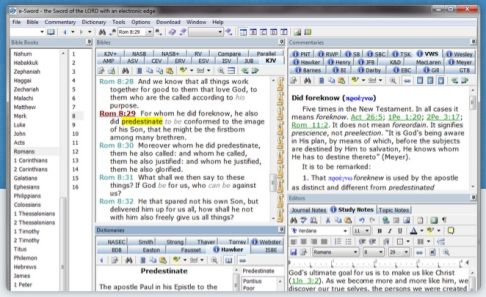
Written and compiled by Gary Kukis
These studies are designed for believers in Jesus Christ only. If you have exercised faith in Christ, then you are in the right place. If you have not, then you need to heed the words of our Lord, Who said, “For God so loved the world that He gave His only-begotten [or, uniquely-born] Son, so that every [one] believing [or, trusting] in Him shall not perish, but shall be have eternal life! For God did not send His Son into the world so that He should judge the world, but so that the world shall be saved through Him. The one believing [or, trusting] in Him is not judged, but the one not believing has already been judged, because he has not believed in the Name of the only-begotten [or, uniquely-born] Son of God.” (John 3:16–18). “I am the Way and the Truth and the Life! No one comes to the Father except through [or, by means of] Me!” (John 14:6).
Every study of the Word of God ought to be preceded by a naming of your sins to God. This restores you to fellowship with God (1John 1:8–10). If we acknowledge our sins, He is faithful and just to forgive us our sins and to cleanse us from all unrighteousness (1John 1:9). If there are people around, you would name these sins silently. If there is no one around, then it does not matter if you name them silently or whether you speak aloud.
Topics—Classifications of Various English Translations of the Bible |
||
Catholic Bibles (those having the imprimatur) |
Mostly literal renderings (with some occasional paraphrasing) |
|
|
||
|
Translations which do not appear to offer anything different |
|
Types of Bible Translations (a graphic) |
||
|
||
Preface: There are as many as a 1000 English translations of the Bible; and about 100 of these are somewhat significant. They have been classified and categorized below. Since most of my work has been in the Old Testament, I have not offered much information about the New Testament only translations.
Of the 100+ English translations of the Bible listed below, you might be familiar with 10 or 20 of them. That is obviously too many for you to sort through and choose; so I have put together a chart to help you in making a decision as to which Bible or Bibles you may find to be the most helpful. Most of these Bibles can be found online or in e-sword (a free Bible computer program).

E-sword graphic from E-sword.net; accessed February 15, 2017.
Other people have given a lifetime to the very tedious work of comparing dozens and even hundreds of manuscripts, to come up with what they believe to be the best reading in the original languages. Consequently, the King James Version is replaceable. The Word of God is alive and powerful not because the KJV was just a literary masterpiece, but because the Bible is the Word of God. Pulling quotations from Today’s English Version or from God’s Word™ or from World English Bible can be every bit as effective as quoting from the KJV. In fact, when dealing with today’s English speaker, these other translations are generally better choices to use to reach the unbeliever (the Shakespearian text of the KJV can sometimes be difficult to understand or even off-putting to some). And, when accuracy and a literal translation is called for, we have the NKJV, the NASB, the ESV, the MEV, all of which are good, solid, readable translations which are reasonably accurate. And, if you do not mind the plethora of notes and commentary, the NET Bible is very readable and reasonably accurate as well.
Most churches which have abandoned the KJV have opted instead, for the most part, the NASB or the NIV Bible. Both of these are excellent translations, the former being slightly more accurate than the latter.
Unfortunately, the NKJV, which I believe to be one of the most excellent translations available today, is not used as often as it could be—and perhaps it is because it has the stigma of having KJV affixed to its name. However, there is little difference between the NKJV, the NASB and the MEV. In any given passage, if you were told to identify which of those translations was used, you would have a 33% chance of guessing the correct translation, because they simply do not differ much from one another.
Below is a list of available English translations—most of which are available online or in Bible programs (like e-sword, which is a free Bible computer program). Some of the translations found are only for the New Testament (or just for the Old Testament); and some have only been done for a few books. |
|
You will note that many translations fall into more than one category. Unless otherwise indicated, these translations/versions are not in any particular order within a category. |
|
Classification |
Bible Translations |
Young’s Literal Translation, Brenner’s Mechanical Translation (also called the Ancient Hebrew Research Center Revised Mechanical Translation of Genesis and Exodus done by Jeff A. Benner), the exeGeses companion Bible |
|
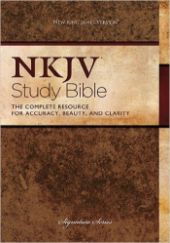 Best (in terms of readability): NKJV, NASB, MEV, ESV (these translations are the most readable of the literal translation group) |
|
Good: WEB, NEV, KJV, CLV, CGV, Emphasized Bible, Green’s Literal translation, KJV3, MKJV, Updated Bible Version, Webster’s Bible translation; a Voice in the Wilderness; the Amplified Bible, the Expanded Bible, Kretzmann’s Commentary (which is the KJV along with additional explanatory text); the Amplified Bible. |
|
None of these literal, almost word-for-word translations are perfect. Those listed as best are judged to be very good. These classifications as to best and good are somewhat subjective on my part. For me, I was looking for a balance between accuracy and readability. |
|
The Amplified Bible, the Expanded Bible, Kretzmann’s Commentary (which is the KJV along with additional explanatory text); the NET Bible; The Voice; Translation for Translators. |
|
I would also classify the ExB and the NET Bible as “Mostly literal renderings (with some occasional paraphrasing);” however, the additional text often moves them closer to the “literal translations,” as both Bibles contain many footnotes/textnotes which read literally... The Voice is very readable, which adds some additional explanatory text (italicized, with very few additional notes). |
|
The Complete Jewish Bible; exeGesis Companion Bible; Hebraic Roots Bible; JPS (Tanakh—1985); Kaplan Translation (I think he has only done the Pentateuch); the Orthodox Jewish Bible; The Scriptures 1998. |
|
These are not books necessarily approved by some Jewish group, but translations which use the Jewish transliteration for names (The Scriptures 1998), or keep a format compatible with the original Hebrew (ECB), or are done by a Jewish organization (The 1985 Tanakh). Some of these might even be Christian Bibles (The Complete Jewish Bible—called complete because it contains the Old and New Testaments). |
|
The Christian Community Bible (1988); The Heritage Bible; the New American Bible (2002); New American Bible (2011); New Jerusalem Bible; New RSV; Revised English Bible; the Catholic edition of TEV (the Good News Bible); the CEV. |
|
Both versions of the NAB are quite good; the Heritage Bible is a very good translation which appears to have been peculiar to a now-defunct Catholic university. I think that the REB is a great reading Bible—its choice of words is often unique and interesting. |
|
Whereas, there are still some great problems with the Catholic Church (none of which can I imagine ever going away); their view on the Word of God has changed dramatically since the Middle Ages. At one time, the Catholic Church persecuted believers who tried to translate the Bible into a modern language (some were executed). They did everything possible to keep the Word of God out of the hands of the believer. Their church services were held in Latin for people who did not speak Latin. However, today, the Catholic Church gives its stamp of approval to many excellent translations. Many times, the associated commentary is not bad either. Just remember to ignore the apocrypha and bear in mind, there is no legitimate reason for a pope and Mary is the mother of the humanity of Jesus; she is not Mary, the mother of God, nor did she lack the sin nature. |
|
Since dividing up the Bible translations using most of these basic categories, I have been surprised how close Jewish and Catholic translations tend to be. You might think that a Jewish translation tends to favor some form of Judaism and that a Catholic translation seems to conform to and promote Catholic doctrine, but that is not the case. Whereas that is occasionally the case with some footnotes which are added; it is almost never the case with the actual text of Scripture. Apart from the Jewish Bibles occasionally making use of some specifically Jewish words and names, you would be hard-pressed in a blind test to differentiate between a Jewish Bible and a Catholic Bible. |
|
Mostly literal renderings (with some occasional paraphrasing): |
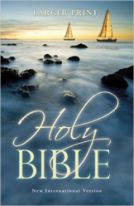 The Awful Scroll Bible; the Conservapedia translation; Ferrar- Fenton’s Bible translation; God’s Truth (Tyndale); HCSB; the Jubilee Bible 2000; H. C. Leupold’s translation; the Lexham English Bible; the NIV; the Tree of Life Version; the Urim-Thummim Version; the WikiBible. |
American English Bible; Beck’s American Translation; International Standard Version; New Advent (Knox) Bible (there is an updated version); Today’s NIV; Translation for Translators; The Voice. |
|
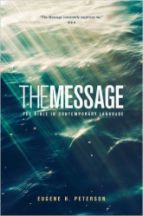 Common English Bible; Contemporary English Version; The Living Bible; the New Berkeley Version; the New Century Version; the New Life Version; The Message; the Good News Bible (TEV); the New Living Translation. |
|
The Knox Bible (and the Revised Knox Bible); the American English Bible; the Urim-Thummim Version; The Message; God’s Truth (Tyndale); Contemporary English Version; the New Living Translation; the Bible in Basic English; the Voice. |
|
I do not mean that these have an incorrect point of view, but that they are almost always translated differently in some respect, which is sometimes quite helpful in understanding a verse (assuming, of course, that their take is accurate). |
|
Bible in Basic English; the Easy English translation; the Easy-to-Read Version–2006; the International Children’s Bible (this appears to be a slightly simplified version of the NCV); God’s Word™; the Good News Bible (TEV); The Message; the Names of God Bible (which is almost equivalent to God’s Word™); the New International Readers’ Version; the New Simplified Bible, the New Life Bible, the Contemporary English Version. |
|
For a simple reading Bible, I prefer God’s Word™, ICB, NCV, and the NIRV from those Bibles above (in case you wanted a Bible for a young son or daughter; or wanted a Bible that you could use to read to a young son or daughter). |
|
The ISV; the ESV; the MEV, the NKJV; the NIV; the New International Readers’ Bible; the New Living Translation; the Revised English Bible. |
|
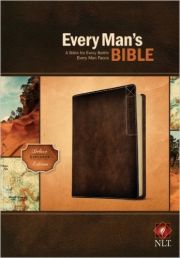 Beck’s American Translation; Common English Bible; Contemporary English Version; The Living Bible; the Message; the New Century Version; the Good News Bible (TEV); God’s Word™; the Easy-to-Read Version–2006; the International Children’s Bible (which is almost exactly the same as the NCV); God’s Word™ (which is almost the same as the Names of God Bible); the Complete Jewish Bible; JPS (Tanakh—1985); the Voice; the New Living Translation. |
|
I think that the best approach is a good reading Bible, which is also an accurate translation. |
|
The Awful Scroll Bible; Brenner’s Mechanical Translation; Concordant Literal Version, Exegesis Companion Bible; the Expanded Bible; the King James Version (for some; not for all); the Orthodox Jewish Bible; Rotherham’s Emphasized Bible; Young’s Literal Translation. |
|
American Standard Version; King James Version; Revised Standard Version, the Third Millennium Bible, the Knox Bible (not sure if the Revise Knox Bible has been entirely completed or not). |
|
Revised English Bible; the Knox Bible (and Revised Knox Bible); the International Standard Version. To a lesser extent, the New Living Translation, the Complete Jewish Bible. |
|
Translations which do not appear to offer anything different. |
American Revised Version 2005; Bond Slave Version; A Conservative Version; King James 2000 Version; KJ3; Modern KJV; Modern Literal Version; Natural Israelite Bible; the Niobi Bible; the Restored Holy Bible; Restored Names Version; 21st Century KJV; and the Word of Yahweh. |
What I mean by this is, rarely do I list any of these translations, even though I often read them when working on a passage, as they rarely offer anything new beyond the literal, often word-for-word translations—using the same vocabulary and sentence structure as the more common NKJV, NASB, ESV and MEV. The way that a thought is expressed or the vocabulary is not new or different from those listed in the 2nd category above. |
|
These are not hard-and-fast classifications. From time to time, I change them (particularly when it comes to their degree of literalness). It is not unusual for one verse may be very literally translated, and then the next verse is more free-form in some of these translations/versions. Or, there may be a verse which has a lot of additional text added; but the next verse is translated almost literally, with no added text. |
My guess is, you probably had no idea that there were so many different English Bible translations. Most of these can be found online or available to e-sword (which is an excellent and free Bible computer program). |
Since my work is primarily with the Old Testament, these categories and comments apply to the Old Testament, for the most part. There are many excellent New Testament only translations which I have ignored in this chart. |
On occasion, there are some serious differences in the text of various Bibles. In those situations, it is good to have a pastor-teacher or commentator familiar with the passage to sort it out. And, so there is no misunderstanding, nearly every believer in the Church Age needs to be under the authority of his right pastor-teacher. About the only exception to this would be the pastor-teacher of a local church. I am a commentator, and I am in church for nearly every service (Bobby teaches 4 lessons/week at Berachah Church and rarely do I miss even a single class in a month). |
Believe it or not, I have left out many translations which I need to examine and include when I update this doctrine. |
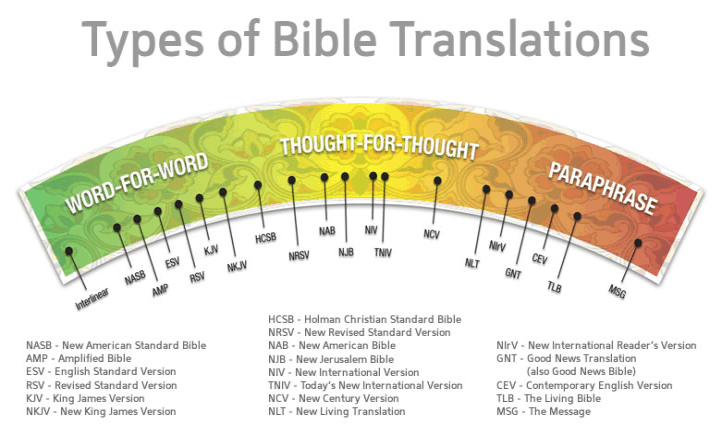
Types of Bible Translations (a graphic) from REBRN (I don’t believe this graphic was original with REBRN.com)
The Text of the Bible: You may be surprised to learn that, we have more confidence in the text of the Bible—which is based upon handwritten manuscripts from 1000 or even 2000 years ago (which were copied and recopied many times)—than we have in the writings of Shakespear, whose writings were produced after the invention of the printing press.
John Lea, in The Greatest Book in the World offers fantastic insight into whether or not scepticism regarding New Testament evidence could impact William Shakespeare’s body of literary works, he begins with the words: ‘In an article in the North American Review, a writer had made some interesting comparisons between the writings of Shakespeare and the Scriptures, which show that much greater care must have been bestowed upon the biblical manuscripts than upon other writings, even when there was so much more opportunity of preserving the correct text by means of printed copies than when all the copies had to be made by hand. He said: “It seems strange that the text of Shakespeare, which has been in existence less than two hundred years, should be so far more uncertain and corrupt than that of the New Testament, now over eighteen centuries old, during nearly fifteen of which it existed only in manuscript…With perhaps a dozen or twenty exceptions, the text of every verse in the New Testament may be said to be so far settled by general consent of scholars, that any dispute as to its readings must relate rather to the interpretation of the words than to any doubts respecting the words themselves. But in every one of Shakespeare’s thirty-seven plays there are probably a hundred readings still in dispute, a large portion of which materially affects the meaning of the passages in which they occur.”‘ In other words, when you read a book in the Bible, it is far more of an accurate reading than any book that Shakespear is said to have written.
For many centuries, the translation of the Old Testament was based upon less than a half-dozen well-authenticated manuscripts which had been preserved in the original languages. These manuscripts have been the basis for nearly every translation made up until the 1960's. However, in the late 1940's, there was an amazing discovery made—the Dead Sea Scrolls were found (near the Dead Sea, quite obviously). These manuscripts (essentially, an ancient library) were dated approximately 100 b.c., thus becoming the oldest known manuscripts for the Old Testament (the complete Old Testament was not found, but large portions of some books were found, in both Greek and Hebrew). I believe that these are the only existing manuscripts from the Old Testament which predate the Lord Jesus Christ. These manuscripts had survived because they were in the dry desert air of Judæa. This discovery gave testimony as to the great accuracy of the text of the Old Testament, which had been preserved by hand for a dozen or more centuries. A full millennium had elapsed between the writing of the Dead Sea Scrolls and the oldest Old Testament manuscript which we had possession of. Yet, there are very few differences between these various sets of manuscripts.
Here is an oft-cited example which testifies to the accuracy of the Hebrew text: in Isa. 53, there are 166 words and the Dead Sea Scrolls has 17 letters which are called into question (that is, there are 17 letters which are different in the Dead Sea Scrolls as opposed to the accepted text previously used). 10 of these letters accounted for a different spelling of the words of the text, which did not affect the sense of the text. 4 of the different letters simply reflect stylistic changes, and also do not affect the meaning of the text. The biggest problem are 3 Hebrew letters which make up the word light, which is added to v. 11. Now, between the manuscripts which we depend upon and the Dead Sea Scrolls, over 1000 years had elapsed, and the biggest problem in this very significant chapter is a singular missing word. Here is how this verse is impacted:
Isa. 53:11 Out of the anguish of his soul he shall see and be satisfied; by his knowledge shall the righteous one, my servant, make many to be accounted righteous, and he shall bear their iniquities. (ESV)
Isa. 53:11 After the suffering of his soul, he will see the light and be satisfied. My righteous servant will justify many by the knowledge of himself; and he will bear their iniquities. (WEB)
If you read carefully, you will observe that there are more differences in the choice of words by the two translations than the word light makes to the passage.
My point in all of this is, modern translations are based upon very accurate ancient manuscripts; and further, we have a large number of excellent modern-English translations available to us now. Many of the modern translations are based upon the original text of ancient manuscripts which we have (and virtually anyone can gain access to these ancient texts (I have at least 15 ancient manuscripts available in my e-sword alone and I have my Hebrew Bible in front of me and my Greek NT within arm’s reach of me right at this moment).